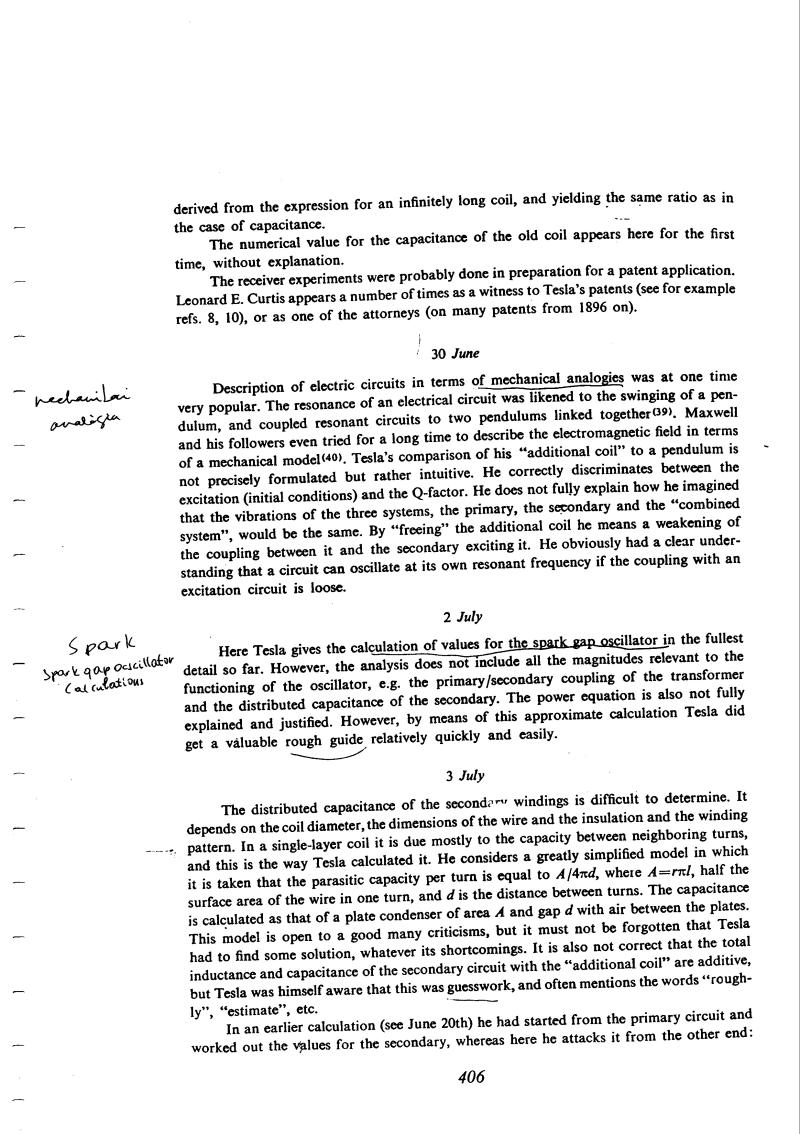July 3
The distributed capacitance of the secondary windings is difficult to determine. It depends on the coil diameter, the dimensions of the wire and the insulation and the winding pattern. In a single-layer coil it is due mostly to the capacity between neigh boring turns, and this is the way Tesla calculated it. He considers a greatly simplified model in which it is taken that the parasitic capacity per turn is equal to A/4Ïd, where A = rÏl, half the surface area of the wire in one turn, and d is the distance between turns. The capacitance is calculated as that of a plate condenser of area A and gap d with air between the plates. This model is open to a good many criticisms, but it must not be forgotten that Tesla had to find some solution, whatever its shortcomings. It is also not correct that the total inductance and capacitance of the secondary circuit with the âadditional coilâ are additive, but Tesla was himself aware that this was guesswork, and often mentions the words âroughlyâ, âestimateâ, etc.
In an earlier calculation (see June 20th) he had started from the primary circuit and worked out the values for the secondary, whereas here he attacks it from the other end:


